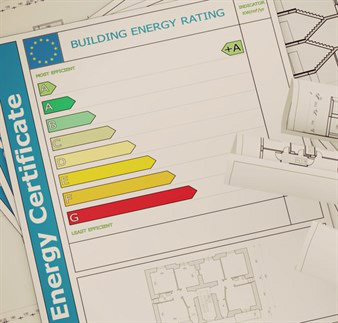- English
- 简体中文
- Esperanto
- Afrikaans
- Català
- שפה עברית
- Cymraeg
- Galego
- 繁体中文
- Latviešu
- icelandic
- ייִדיש
- беларускі
- Hrvatski
- Kreyòl ayisyen
- Shqiptar
- Malti
- lugha ya Kiswahili
- አማርኛ
- Bosanski
- Frysk
- ភាសាខ្មែរ
- ქართული
- ગુજરાતી
- Hausa
- Кыргыз тили
- ಕನ್ನಡ
- Corsa
- Kurdî
- മലയാളം
- Maori
- Монгол хэл
- Hmong
- IsiXhosa
- Zulu
- Punjabi
- پښتو
- Chichewa
- Samoa
- Sesotho
- සිංහල
- Gàidhlig
- Cebuano
- Somali
- Тоҷикӣ
- O'zbek
- Hawaiian
- سنڌي
- Shinra
- Հայերեն
- Igbo
- Sundanese
- Lëtzebuergesch
- Malagasy
- Yoruba
- Español
- Português
- русский
- Français
- 日本語
- Deutsch
- tiếng Việt
- Italiano
- Nederlands
- ภาษาไทย
- Polski
- 한국어
- Svenska
- magyar
- Malay
- বাংলা ভাষার
- Dansk
- Suomi
- हिन्दी
- Pilipino
- Türkçe
- Gaeilge
- العربية
- Indonesia
- Norsk
- تمل
- český
- ελληνικά
- український
- Javanese
- فارسی
- தமிழ்
- తెలుగు
- नेपाली
- Burmese
- български
- ລາວ
- Latine
- Қазақша
- Euskal
- Azərbaycan
- Slovenský jazyk
- Македонски
- Lietuvos
- Eesti Keel
- Română
- Slovenski
- मराठी
- Srpski језик
Why should you go for photovoltaics?
2022-12-22
The word photovoltaics (PV) was first mentioned around 1890, and it comes from the Greek words: photo, ‘phos,’ meaning light, and ‘volt,’ which refers to electricity. Photovoltaic, therefore, means light-electricity, describing exactly the way photovoltaic materials and devices work. Photovoltaics is a method to directly convert light into electricity. A well-known example of photovoltaics is solar-powered calculators, which use a small photovoltaic cell to power the calculator.
Although sometimes photovoltaic panels are confused with solar water heating systems, which are panels used to heat water, photovoltaics (or solar PV) work in a different way and they are used to generate electricity, not heat. Furthermore, they are often referred to as solar panels.
Moreover, contrary to the general thought, Solar PV’s do not necessarily use direct sunlight to function, some light is enough for the system to work. Therefore, investing in photovoltaics ensures electricity for buildings not only during long and sunny summer days but also during cloudy days like the winter months. It is true though, that the panels’ efficiency is directly proportional to the amount of light they receive, hence the stronger the sun, the better.
What Are the Benefits of Photovoltaics?
As is popularly known, energy from the sun is clean and endless. Photovoltaics make good use of the energy of the sun and convert it into electricity that can be used to make households greener and less dependent on the grid. Contrary to popular belief that supports that solar panels are expensive, you should be happy to know that solar panels can actually save you money! There are different grants that will pay you for the clean energy that you produce, therefore making solar energy a wise investment. Incorporating solar panels will eventually provide you not only environmental but also financial benefits.
Is this a bit confusing? Read below to understand how this technology works and which options are available in the market.
How Do Photovoltaics Work?
As photovoltaic refers to the conversion of light directly into electricity, photovoltaic technology uses materials with photoelectric effect to produce power. These are called semiconductors. The most popular semiconductor is silicon, which absorbs the photons from the light and as a result releases electrons from the atoms.
Light (either natural or artificial) that reaches a photovoltaic cell creates an electric field across the layers of the material. Those free electrons can then be captured, resulting in an electric current which can be used to produce electricity. The more light that gets absorbed, the more electricity that will be produced by photovoltaics. Solar panels using photovoltaics produce direct current (DC), which is converted to alternate current (AC) in order to make the electricity usable for home appliances. If the produced electricity is not used, it can be converted back to DC, and exported back to the grid.
What Is a Photovoltaic Cell and a PV Module?
Solar cells for photovoltaics are made out of semiconductor materials, generally silicon. When light reaches the solar cell, which has electric field with both a positive and a negative side, the electrons are released from the atoms. Captured within the existing electric current of the photovoltaic cell, electricity is produced.
If several solar cells are electrically connected with each other within a supporting structure, people talk about a photovoltaic module, which is designed to produce electricity at a certain voltage. The combination of multiple photovoltaic modules (or panels) is called a photovoltaic system, which can be simply installed on top of the existing roof of a building in order to provide it with electricity.
What Types of PV Modules Are There?
One easy criteria that can be used to classify PV Modules is whether or not they are connected to the grid. With this in mind we can classify panels into:
Off-Grid Systems: these are systems which are not connected to the grid, and are generally used to cover electricity needs of remote buildings or vacation homes which have no access to the public grid. These panels are a convenient option since they do not require special permits from electricity distribution companies. However, since they are 100% independent, off-grid systems generally require an additional generator or batteries to have electricity when the sun is not shining. As solar battery storage system costs are showing a decline, the option of solar battery storage systems is more accessible and affordable for more households.
Grid-Connected Systems: these are systems that are connected to the grid, which means you can use electricity from the power company when you need it. When you don’t, you can use the electricity generated by your panels for your personal use, and you can also choose to sell all, or the excess, back to the grid. Grid-tied systems do not have any battery backup capability.

What About Lifespan and Maintenance of a Photovoltaic Module?
One of the very positive aspects of investing in photovoltaics is that the product has a long lifespan. The exact number depends on different variables such as quality of the panel and climatic conditions, but generally, they will last more than 40 years. Moreover, solar systems require very little maintenance and they come, in general, with a 25-year performance warranty.
However, solar PV inverters, which are the ones in charge of converting solar DC to grid AC electricity, might need to be replaced after 12 to 15 years and usually come with a 5-year guarantee.
What Is the Feed-In Tariff?
This was a UK Government scheme designed to motivate people to use renewable sources of energy. If you installed an electricity-generating technology from a renewable or low-carbon source, and you fulfilled some specific requirements, you could get money from your energy supplier.
This government scheme came to an end in April 2019, though. The prices for the renewable technology that fell under the scheme became more affordable over time, and therefore the government no longer deems it necessary to subsidise the technologies.
What Is the Energy Performance Certificate (EPC)?

This is a certificate that all domestic and commercial buildings available to buy or rent in the UK must have. The energy performance survey can help you identify ways to save money on your energy bills by identifying those points where you are wasting energy. The EPC will tell you how efficient your building is, rating it from A (very efficient) to G (inefficient). Once created, the EPC is valid for ten years.
The Future of Photovoltaics
As with any technology, photovoltaics are under constant development with the major focus being upon making them more efficient – both in terms of cell-efficiency and cost-efficiency for the end user. Different companies are working on improved efficiency of photovoltaics to increase solar cell efficiency but throughout the last decade, the improvement of efficiency has been very slow.
However, this might be a good aspect for owners of photovoltaics as well, because of those who are currently planning on investing in a photovoltaic system. As there is no sudden rise in the efficiency of photovoltaics expected, it is unlikely that new improvements will outdate the photovoltaics that is currently available on the commercial market.



